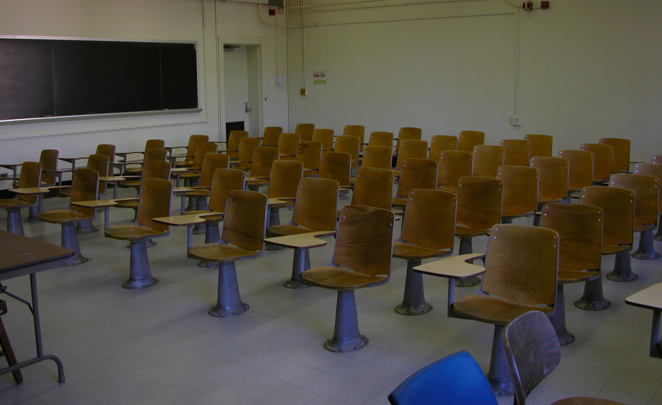Why (and how) do we teach history?
November, 2010 · By Justin Bengry
One of my responsibilities as a postdoc at the University of Saskatchewan is to teach one course per year. This isn’t entirely new to me. I TAed for a dozen years, and was the instructor of record for a course last year at the University of California. But I’m still pretty junior in terms of running my own classes.
In anticipation of teaching a course in twentieth-century European history this coming term, I’m thinking about how I want to structure the course, organize themes, and what I want to impart to my students. Essentially, the purpose of the course will affect its structure. But what is the purpose of the course? Why do we teach history? And how does this affect our delivery?
These are questions I’ve struggled with throughout graduate school, and now beyond. I want to nurture in my students an engagement and passion with the subjects and themes that have drawn me to history: the power of lived experience, the importance of minority positions to broader social concerns, and the possibility of positive change. But is that all I want my students to take from my classes? No.
What’s perhaps even more important, I believe, are the skills they can learn in a history class. Students learn to critically engage with sources by asking questions about who created them and for what purposes. They also learn how to communicate effectively, strengthening their oral communication skills in seminar situations, and honing their written communication skills in essays and exams. Students also build their critical thinking skills as they are asked to evaluate historical situations, events, and individuals’ motivations. They need to grapple with understanding the forces of change and continuity, and the competing interests which direct them.
So this brings me back to the class I’m planning. If I want students to take best advantage of my course to gain and improve their skills, how can I best facilitate that?
I’m very ambivalent about the lecture model of education. Part of this is because I have so little experience giving lectures, but also because I believe it too easily allows students to remain passive rather than active learners. That isn’t to say that lectures don’t have a role in education, allowing students the opportunity to gain insights and direction from experts in a particular field. And we’ve all certainly had excellent lectures from whom we’ve gained a lot. But I think they are limited in what they can offer most students.
I believe strongly in the seminar model, which I’ve used very successfully in my past teaching experience. My students learned a great deal from close reading and discussion of sources and documents—and so did I. That course, however, included only about a dozen students, an ideal number for engaged and active learning. In January, I’ll be teaching more than 50, far too many to sit around one table.
So my solution is to hybridize, creating a combination of lecture and seminar opportunities. Since we will meet three times a week, I’m planning to devote two days to lectures, which will frame the material, establish common background, and create a base upon which we can further explore particular themes. Fridays, then, will be turned over to self-directed groups who will discuss pre-circulated questions based on primary and secondary readings related to that week’s lectures. There is no way to engage all 50 students at once in a seminar, so groups will comprise 6-8 students, and a rotating group leader who will facilitate conversation. I will circulate, observe, answer questions, and interject only as needed.
I’m excited about this model: a compromise which allows me to work effectively with 50+ students, but which also creates and environment where each one has to engage with sources and communicate his or her thoughts. Since I truly believe that the benefit derived from studying history isn’t always about the content, but rather about the skills we teach students, this model seems a stronger method to achieve that.
But I’m curious to hear how others have handled these medium sized courses that are too large to be true seminars, but small enough to offer some opportunity to go beyond traditional lectures to promote active and engaged learning. What have you done? What has succeeded, and what has failed?
This post was originally published at History Compass Exchanges on
5 November 2010.
Tags: lecture, purpose of history, seminar, teaching methods


Leave a Reply